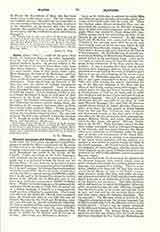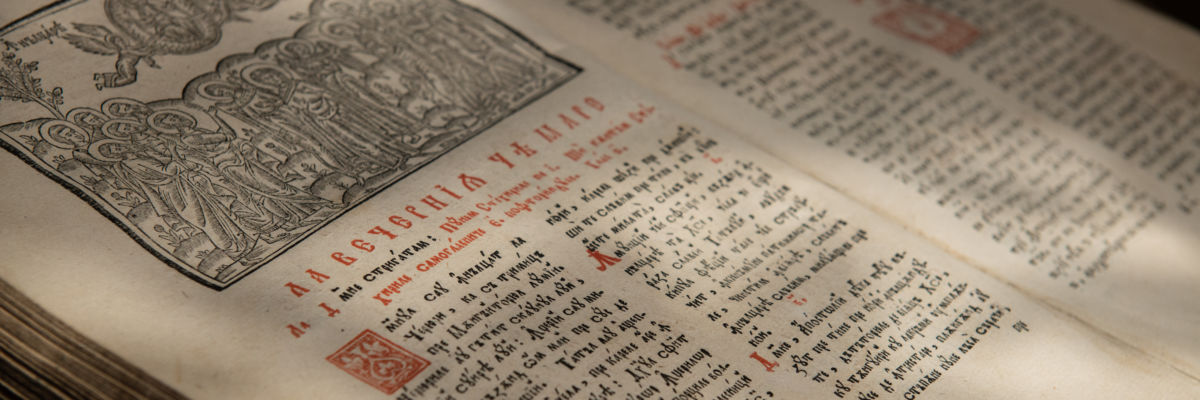

Slavonic Language and Liturgy .—Although the Latin holds the chief place among the liturgical languages in which the Mass is celebrated and the praise of God recited in the Divine Offices, yet the Slavonic language comes next to it among the languages widely used throughout the world in the liturgy of the Church. Unlike the Greek or the Latin languages, each of which may be said to be representative of a single rite, it is dedicated to both the Greek and the Roman Rites. Its use, however, is far better known throughout Europe as an expression of the Greek Rite; for it is used amongst the various Slavic nationalities of the Byzantine Rite, whether Catholic or Orthodox, and in that form is spread among 115,000,000 people; but it is also used in the Roman Rite along the eastern shores of the Adriatic Sea in Dalmatia and in the lower part of Croatia among about 100,000 Catholics there. Whilst the Greek language is the norm and the original of the Byzantine or Greek Rite, its actual use as a church language is limited to a comparatively small number, reckoning by population. The liturgy and offices of the Byzantine Church were translated from the Greek into what is now Old Slavonic (or Church Slavonic) by Sts. Cyril and Methodius about the year 866 and the period immediately following. St. Cyril is credited with having invented or adapted a special alphabet which now bears his name (Cyrillic) in order to express the sounds of the Slavonic language, as spoken by the Bulgars and Moravians of his day. (See Cyril and Methodius, Saints.)
Later on St. Methodius translated the entire Bible into Slavonic and his disciples afterwards added other works of the Greek saints and the canon law. These two brother saints always celebrated Mass and administered the sacraments in the Slavonic language. News of their successful missionary work among the pagan Slavs was carried to Rome along with complaints against them for celebrating the rites of the Church in the heathen vernacular. In 868 Saints Cyril and Methodius were summoned to Rome by Nicholas I, but arriving there after his death they were heartily received by his successor Adrian II, who approved of their Slavonic version of the liturgy. St. Cyril died in Rome in 869 and is buried in the Church of San Clemente. St. Methodius was afterwards consecrated Archbishop of Moravia and Pannonia and returned thither to his missionary work. Later on he was again accused of using the heathen Slavonic language in the celebration of the Mass and in the sacraments. It was a popular idea then that as there had been three languages, Hebrew, Greek, and Latin, inscribed over our Lord on the cross, it would be sacrilegious to use any other language in the service of the Church. St. Methodius appealed to the pope and in 879 he was again summoned to Rome, before John VIII, who after hearing the matter sanctioned the use of the Slavonic language in the Mass and the offices of the Church, saying among other things: “We rightly praise the Slavonic letters invented by Cyril, in which praises to God are set forth, and we order that the glories and deeds of Christ our Lord be told in that same language. Nor is it in anywise opposed to wholesome doctrine and faith to say Mass in that same Slavonic language (Nec sanae fidei vel doctrinae aliquid obstat missam in eadem slavonica lingua canere), or to chant the holy gospels or divine lessons from the Old and New Testaments duly translated and interpreted therein, or the other parts of the divine office: for He who created the three principal languages, Hebrew, Greek, and Latin, also made the others for His praise and glory” (Boczek, Codex, tom. I, pp. 43-44). From that time onward the Slavonic tongue was firmly fixed as a liturgical language of the Church, and was used wherever the Slavic tribes were converted to Christianity under the influence of monks and missionaries of the Greek Rite. The Cyrillic letters used in writing it are adaptations of the uncial Greek alphabet, with the addition of a number of new letters to express sounds not found in the Greek language. All Church books in Russia, Servia, Bulgaria, or Austro-Hungary (whether used in the Greek Catholic or the Greek Orthodox Churches) are printed in the old Cyrillic alphabet and in the ancient Slavonic tongue.
But even before St. Cyril invented his alphabet for the Slavonic language there existed certain runes or native characters in which the southern dialect of the language was committed to writing. There is a tradition, alluded to by Innocent XI, that they were invented by St. Jerome as early as the fourth century; Jagič however thinks that they were really the original letters invented by St. Cyril and afterwards abandoned in favor of an imitation of Greek characters by his disciples and successors. This older alphabet, which still survives, is called the Glagolitic (from glagolati, to speak, because the rude tribesmen imagined that the letters spoke to the reader and told him what to say), and was used by the southern Slavic tribes and now exists along the Adriatic highlands. (See Glagolitic.) The Slavonic which is written in the Glagolitic characters is also the ancient language, but it differs considerably from the Slavonic written in the Cyrillic letters. In fact it may be roughly compared to the difference between the Gaelic of Ireland and the Gaelic of Scotland. The Roman Mass was translated into this Slavonic shortly after the Greek liturgy had been translated by Sts. Cyril and Methodius, so that in the course of time among the Slavic peoples the southern Slavonic written in Glagolitic letters became the language of the Roman Rite, while the northern Slavonic written in Cyrillic letters was the language of the Greek Rite. The prevailing use of the Latin language and the adoption of the Roman alphabet by many Slavic nationalities caused the use of the Glagolitic to diminish and Latin to gradually take its place. The northern Slavic peoples, like the Bohemians, Poles, and Slovaks, who were converted by Latin missionaries, used the Latin in their rite from the very first. At present the Glagolitic is only used in Dalmatia and Croatia. Urban VIII in 1631 definitively settled the use of the Glagolitic-Slavonic missal and office-books in the Roman Rite, and laid down rules where the clergy of each language came in contact with each other in regard to church services. Leo XIII published two editions of the Glagolitic Missal, from one of which the illustration on page 45 is taken.
The liturgy used in the Slavonic language, whether of Greek or Roman Rite, offers no peculiarities differing from the original Greek or Latin sources. The Ruthenians have introduced an occasional minor modification (see Ruthenian Rite), but the Orthodox Russians, Bulgarians, and Servians substantially follow the Byzantine liturgy and offices in the Slavonic version. The Glagolitic Missal, Breviary, and ritual follow closely the Roman liturgical books, and the latest editions contain the new offices authorized by the Roman congregations. The casual observer could not distinguish the Slavonic priest from the Latin priest when celebrating Mass or other services, except by hearing the language as pronounced aloud.
ANDREW J. SHIPMAN


